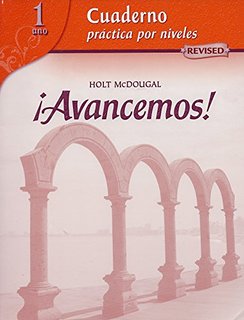
All Solutions
Page 15: Leer A
The objective of this exercise is to read with comprehension the text in the workbook.
Read the text twice and head onto the questions. Read each question thoroughly as there might be a gimmick. When you are sure of the answer, select whether each sentence is true of false. Each question will be analysed separately in the following paragraphs.
According to the text, the last item listed is precisely “practicar deportes”. This is a true statement.
Take a close look at the first item listed. You will notice similarities in the wording. Do not let this confuse you: “pasear” means “dar un paseo” (to take a walk), whilst “pasar [un rato]” means “to spend [time]”. Logically, spending time with someone may or may not include taking a walk with them. From here, we see that this statement is false. The true statement would be: “El día de actividades es para pasar un rato con amigos.”.
We can see that this exact item appears on the list, so this statement is true.
Again, take a close look at the last line. It specifically says that the activities are “después de las clases”, thus the opposite. From here, we see that this statement is false.
2. F
3. C
4. F
The objective of this exercise is to practise the use of the verb “gustar”.
These are personal questions, thus you will respond in the first person according to your preferences. Below, you will find examples of how your sentences should look like. Examples for both affirmative and negative responses will be given when this is applicable.
1.A: Sí, (a mí) me gusta pasar un rato con los amigos.
1.B: No, (a mí) no me gusta pasar un rato con los amigos.
2. El día de actividades con amigos me gusta jugar al fútbol.
3. También me gusta montar en bici, hablar por teléfono y mirar la tele.
You should answer what activities you like to do in your free time. Use the answers below as a reference.
Tip: The answer should be a simple yes/no complete sentence, as shown below.
– Sí, a mi me gusta pasar un rato con los amigos.
*(Yes, I like to spend time with friends.)*
Hint: In the question, a common construction was used. It is the construction with ***gustar (to like)*** which is followed by an infinitive. So, in our answer below, we put *”practicar deportes,”* but you can put any other activity and the sentence will still be correct.
– En el día de actividades con amigos, me gusta practicar deportes.
*(On a day of activities with friends, I like to practice sports.)*
Hint: To express likings, use the conjugated verb ***gustar* + infinitive.** You can put a different activity and your sentence will still be grammatically correct.
– Me gusta dibujar y escuchar música.
*(I like to draw and listen to music.)*

